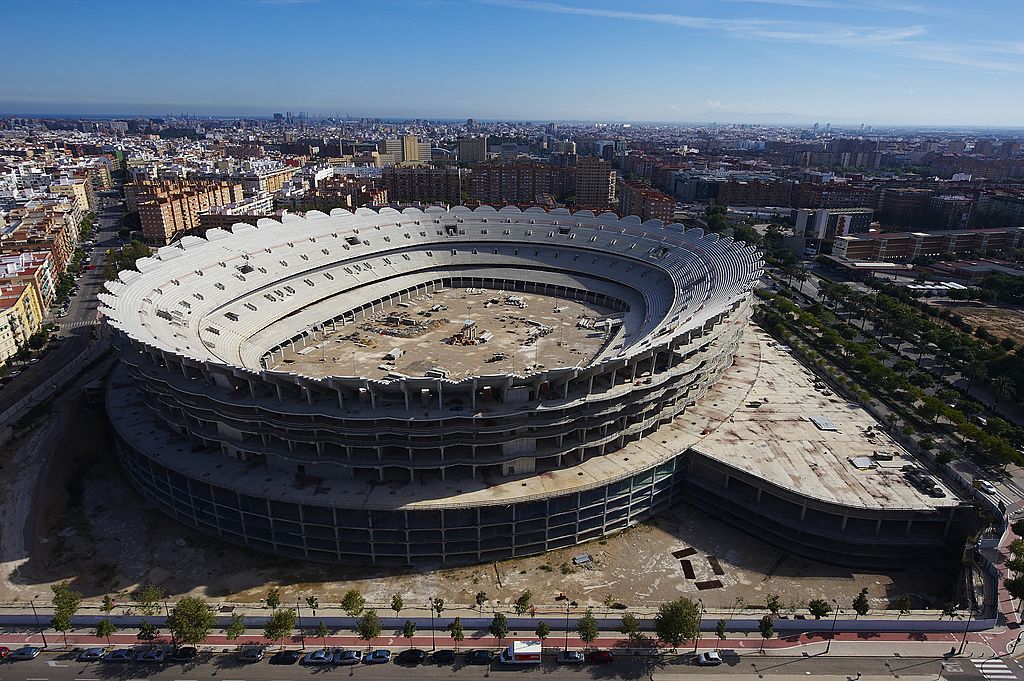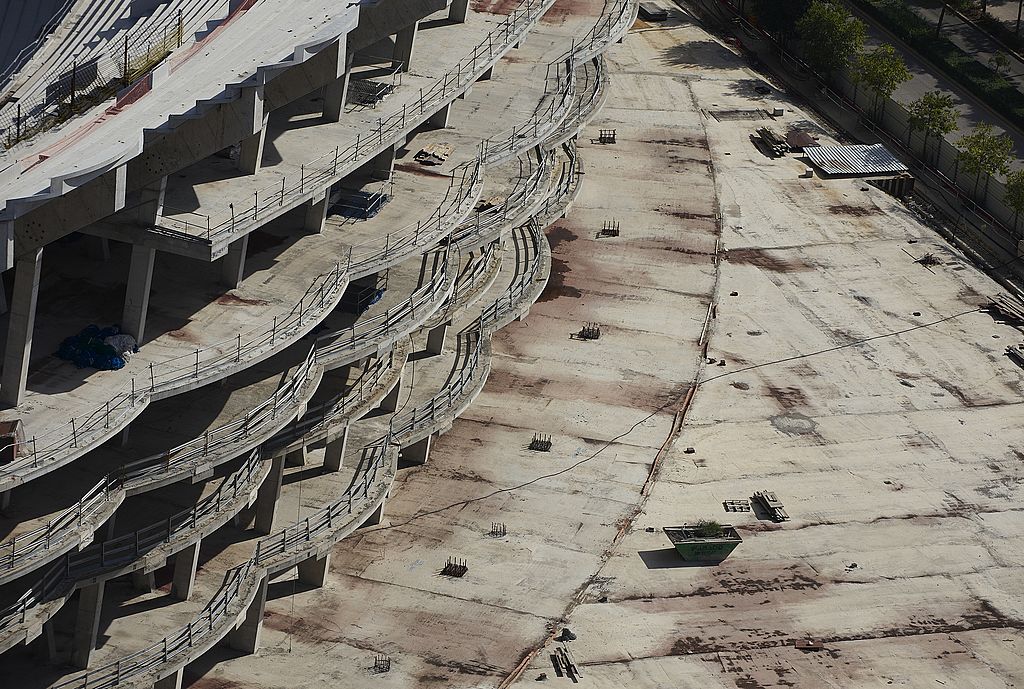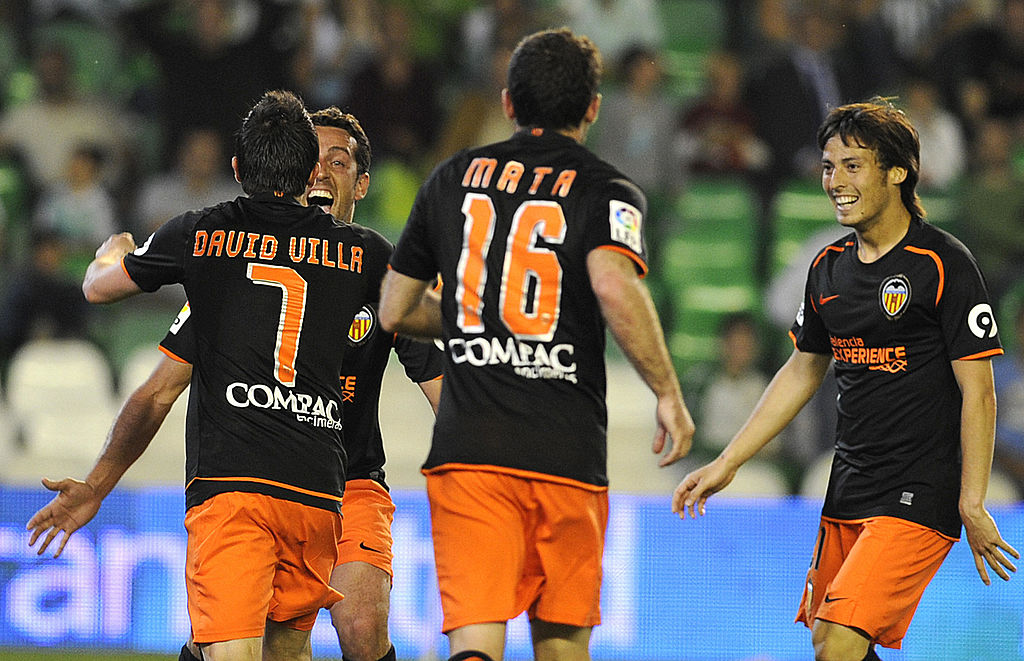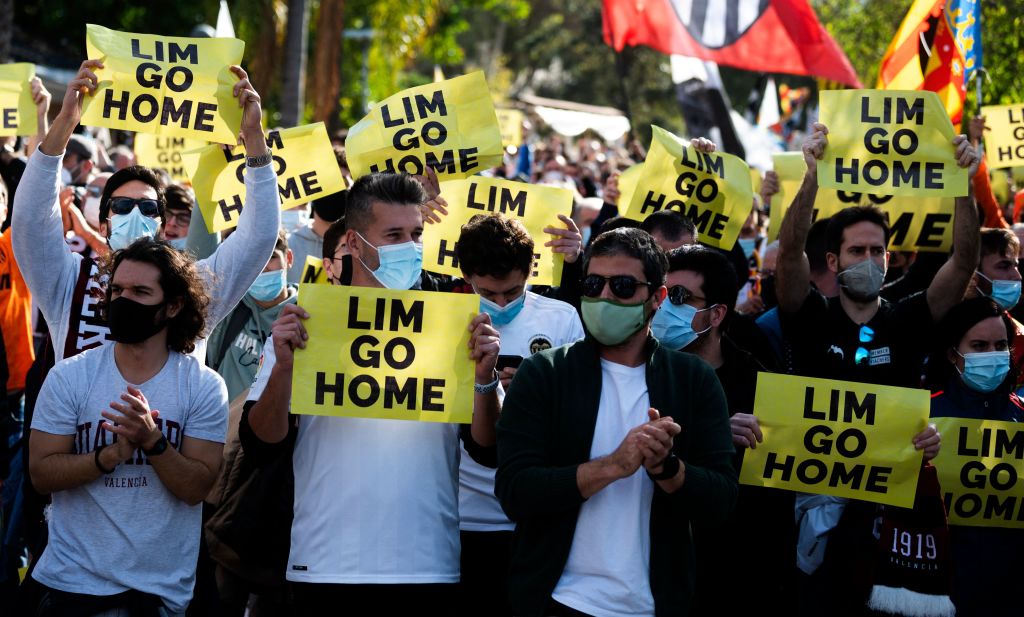15 years ago, with the Champions League anthem still ringing in their ears, Valencia unveiled plans to move into a new, state-of-the-art home which was to be the pinnacle of supporter luxury and fan experience.
But right now, if you arrive into the city and took a 30-minute stroll to the Avenue de la Safor to where it sits, you wouldn't find the proposed 80,000-seater stadium, you'd find a building site – one that has laid dormant for a decade and cost four people their lives in the process.
This is the tragic story of Valencia's Nou Mestalla.
Why Valencia's Nou Mestalla stadium has been empty for 14 years

In 2007, Valencia were one of the most exciting teams in European football. Just a few years removed from two La Liga championships and a UEFA Cup under Rafa Benitez, Quique Sanchez Flores had established them as Champions League regulars and the future of the club looked blindingly bright.
Huge stars like David Villa, Fernando Morientes, Pablo Aimar, Roberto Ayala and David Albelda were all established in the squad, with both David Silva and Juan Mata making their way through the youth ranks. They were comfortably seen as the third-biggest club in Spain behind just Real Madrid and Barcelona – and it was around this time that the club's owners decided that if they were to stay the third-biggest club in Spain or have aspirations of unseating the establishment, they needed the infrastructure to match. They needed a new stadium.
In the August of that year, ground was broken on the Nou Mestalla: an 80,000-seater stadium designer with pure supporter luxury in mind with work scheduled to be completed in time for the 2009 season. 14 years on from that projected date of completion, the Nou Mestalla stands from the outside as a majestic triumph of modern sporting infrastructure – but even the most cursory inspection inside shows it as nothing more than a concrete shell. The third-biggest biggest stadium in Spain currently plays host to a decaying construction site. But how did it get to this?

Well, despite dropping to 10th in the league the year after work began on the stadium, Valencia entered the 2008/09 season in a great position. They'd make it to the latter stages of both the Copa Del Rey and the UEFA Cup, David Villa would hit 30 goals in all competitions and rookie manager Unai Emery was laying the foundations for what was to become two back-to-back third-place finishes and Champions League qualification.
However, while things on the field were prospering, Spain was thrown into possibly the biggest financial crisis in its history. With a housing bubble on the verge of collapse, GDP growth through the roof and the country unable to bail out its own financial sector, it entered a near six-year-long period of massive economic downturn, catastrophic increases in unemployment, as well as the frequent bankruptcies of major companies. In December 2008, it was reported that one such company might be Valencia Football Club, allegedly some €400 million in debt.
They denied these claims but were publicly rebuffed by their creditors when they asked for an additional €100m to cover operating costs – and while the club battled to keep itself afloat, one decision that was taken out of their hands was the ongoing work taking place an hour down the road at the Nou Mestalla.

Fundamentally, the club had been all the initial costs out of their own pockets but were reliant on the sale of the current stadium to finance the rest of the work. And of course, the thing about a nationwide bursting of a property bubble is that it tends to make the selling of a near-90-year-old football stadium that would take a fortune to modernise or adapt for other purposes virtually impossible.
With this source of income immediately turned off for them and any additional money coming in desperately needed just to keep the lights on, work was immediately halted in February 2009. This was a decision, however, that came nine months too late for construction workers who were killed on-site the year previously.
In May 2008, collapsing scaffolding around one of the main pillars sent two workers and 3,000 kilos of material plunging 25 feet to the ground. The two men on the scaffolding from Bolivia and Ecuador, respectively, were killed immediately and two Spanish workers who had been in the vicinity of the accident died of their injuries in the coming days.
An investigation into the accident found no wrongdoing on the part of either the club, the construction firm or the workers themselves and a five-minute silence was held across the Valencian autonomous region.

Now, the team's fortune since construction varied have been varied. The financial situation that emerged in 2008 led to the massive sales of Villa, Silva, Mata, Jordi Alba and Roberto Soldado over the proceeding years with a sizeable profit made in every single transfer window until the economic crisis was declared over in 2014. They were third under Emery and fourth with both Nuno Espirito Santo and Marcelino but 13th under Voro and 12th that year that they just randomly appointed Gary Neville.
But whether it was boom or bust on the field, no more work has happened at the Nou Mestalla. Several announcements of progress have been made but the dates and deadlines they carry have all whizzed by without anything actually happening.
In December 2011, it was announced that the club had finally negotiated a deal with the Spanish financial institution Bankia to complete the works on the stadium, transferring the ownership of the current stadium to the bank as part of the arrangement. To the shock of absolutely nobody, this deal collapsed not long after it was announced.
In 2013, the club unveiled a new design of the site with the capacity scaled back from 80,000 to an apparently more manageable 61,000. World-renowned architecture company Fenwick Iribarren reworked the roof, added a car park and presented the club with something that looked like it could actually be completed much easier. However, the one thing missing from this news was a start date and indeed, one never materialised.

In 2017, the club announced they'd begun negotiations with the local council to make it a collaborative project and finally recommence the construction but again, despite several statements about how this would help the club become an even more vital part of the local community, no firm dates were announced and the story went quiet within a few months.
Then after five years of silence in June 2022, the club announced that it had once again revised the finalised capacity. Now down to 49,000 – an astonishing 500 seats less than their existing stadium – they were confident that work would resume in October of that year and be completed in time for the 2023/24 season. Again, October rolled around and not a single drop of concrete, not one solitary brick or slab and not a single thing happened within the walls of the Nou Mestalla.
Ask Valencia fans though why they're so routinely promised one thing and delivered another – and they'll tell you in no uncertain terms it's just been par for the course with the club's current owners. In 2014, at the end of the financial crisis, Singaporean billionaire, Peter Lim, acquired the team by buying around 70 per cent of its shares from the bank that had propped them up the years prior. He spoke of ambitious plans to return to the Champions League, regain the league title and most importantly, finally finish the new stadium.

While there have been three Champions League campaigns in that time, the sales of Nicolas Otamendi, Andre Gomes and Paco Alcacer have been seen as proof of the club's serious lack of ambition. Behind the scenes, though, this is a club reportedly in disarray.
A string of disastrous managerial appointments combined with unwanted influence from player agents has left Valencia facing the very real prospect of their first relegation from La Liga since 1986. If that were to happen, then the financial implications for not only the new stadium but the club as a whole would begin to look seriously grim.
It's unclear at this stage when, if ever, the Nou Mestalla will be completed. For a landmark project that was supposed to represent an emerging force in European football setting themselves up permanently at the very top table, this could ultimately yet prove to be the financial noose around their neck that ultimately kills their ambitions for good.
For the fans of this great club who've spent the last 14 years making the old Mestalla one of the most impressive and intimidating arenas in the entire sport, answers aren't just required: they're deserved. But after a decade of them being forced to remain in a home they were told was no longer fit for purpose, one look at the stadium's north stand on a matchday – arguably the most impressive single stand in European football – means the first question is simply… "Why would anyone want to leave?"







